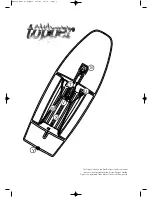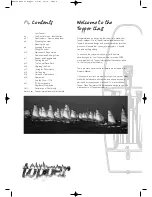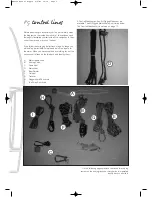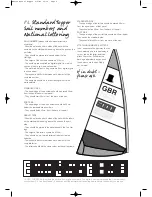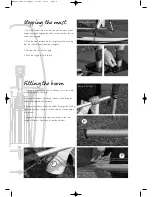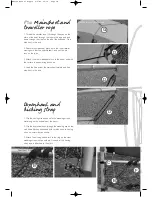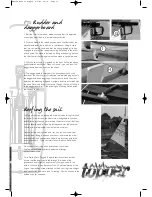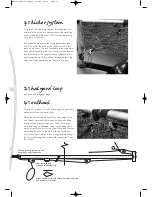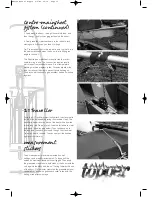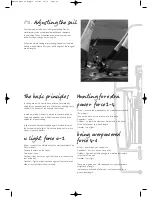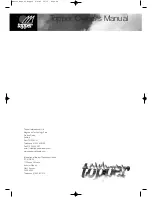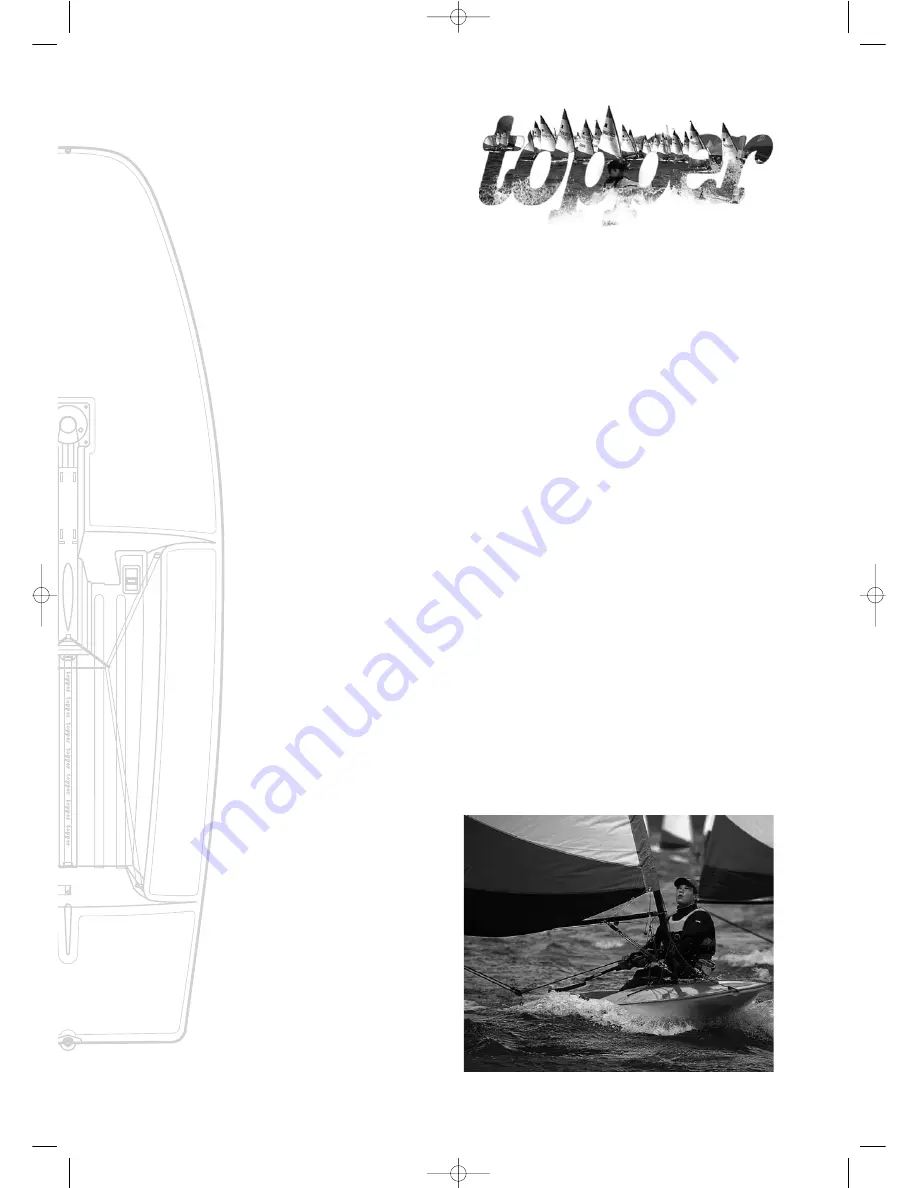
P17.
Tuning for
performance
The performance of the Topper gives very exciting racing,
yet her simplicity and handling qualities make it quite
feasible for those with little experience to sail competitively.
The class rules aim to ensure that the one-design principles
of the class are maintained and the racing is a true test
of the helmsman’s sailing skills. No one is able to gain
advantage by making expensive modifications or adding
sophisticated or specialised gadgets.
However, although the rig is very simple there is some
scope for tuning to improve performance which is given in
these notes. More detailed information can be obtained
from the Dave Cockerill and John Caig Sailing book which
is recommended for both the novice and the expert.
sail foot tension
Outhaul: In light winds the tension on the foot of the sail
should be less than in strong wind but never slack.
For windward sailing the sail should never be baggy. In
moderate winds, tension the foot of the sail so that it is just
pulled into horizontal creases at the foot. In light winds ease
the outhaul so that the creases just disappear.
footline
For sails with a footline, with the outhaul pulled slightly
tension the footline so that the edge of the sail just curls.
rope traveller
This controls the position the boom takes up relative to the
boat when the sheet is pulled hard in. In stronger winds
going to windward, the boom should be out towards the
corner of the stern. This is achieved by tightening up the
traveller as hard as possible so that the mainsheet slides
across easily from one side to another. In light winds going
to windward you may choose to let out the traveller so that
the mainsheet does not travel so far across the boat.
The position of the boom is of course also controlled by
the mainsheet itself, but the tension of this is constantly
under adjustment, whereas the traveller is only occasionally
adjusted to suit the general prevailing conditions.
Owners manual Topper 8/2/06 12:35 Page 17

